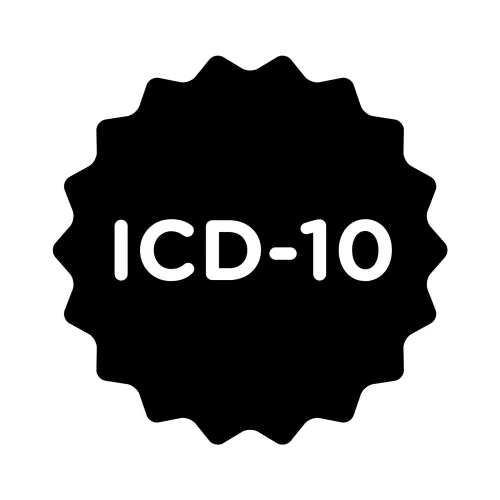EM Coding Alert
Learn These 3 Keys to Separate Incident-To, Split Visits
POS can be vital when making the coding decision.
When a physician and a nonphysician practitioner (NPP) — also known as mid-level providers (MLP) or advanced practice providers (APP) — work together to perform an E/M service, it might be an incident-to service. It also might be a split/shared visit, and knowing the differences between the two is vital.
Why? If you don’t code for incident-to or split/shared visits when you could, you’ll leave deserved reimbursement in the payer’s purse. Further, misusing either of these coding features risks raising suspicion in claims processing departments.
Follow these rules to help you differentiate between incident-to and split/shared visits.
Net More $$ With Incident-To, Split/Shared Coding Mastery
Both incident-to and split visit coding are Medicare features, reminds Cynthia A. Swanson RN, CPC, CEMC, CHC, CPMA, senior manager of healthcare consulting for Seim Johnson in Omaha, Neb. Only Medicare payers, and those that follow Medicare guidelines, are bound by incident-to and split visit rules.
“Other commercial plans may or may not follow Medicare,” says Swanson. Additionally, third-party payers may have different requirements for incident-to and split/shared visits.
Best bet: Check with the third-party payer if you don’t know its incident-to and split visit guidelines.
Also, incident-to and split visit coding can be beneficial financially. If a physician teams with a qualified nonphysician practitioner (NPP) for either of these services, you may be able to code the visit under the physician’s National Provider Identifier (NPI).
This could net 100 percent of the allowed payout — when a physician is involved. If you have to report the E/M under the NPP’s NPI, you’ll only net 85 percent of the allowed amount, confirms Jan Rasmussen, CPC, PCS, ACS-GI, ACS-OB, owner/consultant of Professional Coding Solutions, Holcombe, Wisc.
Use Incident-To Only at POS 11
According to Marcella Bucknam, CPC, CPC-I, CCS-P, CPC-H, CCS, CPC-P, COBGC, CCC, internal audit manager with PeaceHealth in Vancouver, Wash., there are three primary differences between split/shared visits and incident-to billing.
The first difference is that “split/shared visits are for hospital-based encounters like inpatient, observation [and] ED,” she explains. You would also report a visit as split/shared for E/Ms that take place in hospital outpatient departments or provider-based clinics. “In other words, these services only apply in a POS [place of service] other than 11 [Office],” Bucknam continues.
Explanation: In the clinic setting the encounter must first meet incident-to criteria before you even consider coding it as a shared encounter, Rasmussen says. “In the hospital/outpatient setting there is no incident-to, so the only option to bill a service partially performed by an NPP in the physician’s name is shared care,” she continues.
Find Provider Pair Before Coding Split/Shared
The second major difference between these two coding features is that split/shared visits must involve two “qualified” providers. Incident-to only requires a single NPP.
Split/shared visit coding “only applies to two physicians or a physician with a qualified NPP, or two qualified NPPs” who combine to perform an E/M for a patient, says Bucknam. The providers must both see the patient, and perform a significant portion of the service, before coding the E/M under the physician’s NPI. If the two providers are both NPPs, then the reimbursement rate will be 85 percent of the code regardless of whose NPI they use.
On the other hand, you might be able to code incident-to for work that an NPP does alone to care for a physician’s patient — if:
-
The patient is established.
-
The physician has seen the physician for the condition already and
-
The physician has established a plan of care for the patient’s condition.
-
A physician is in the suite and immediately available at the time the NPP is seeing the patient.
Check Date of Service for Split/Shared Clues
A third difference between split/shared and incident-to is that split/shared visits always involve two providers who must see the patient on the same date. Incident-to services may occur at another time under the physician’s direct supervision.
So if you’re considering split/shared coding, make sure that you can prove two providers teamed up to provide a complete E/M on the same date.
Know All Guidelines Before Coding These Encounters
Remember, you’ll need to have a full understanding of Medicare’s rules and regs before using these features to report E/Ms.
“The Medicare guidelines for incident-to services and split/shared services are complex so it is important to be sure practitioners have a good understanding of the Medicare rules and are compliant in their reporting and billing,” Swanson reminds.
Example: You can only use split/shared visit codes “for certain E/M service codes and places of service. A split/shared service cannot be reported for critical care services, consultation services, new patient office visits, or in the skilled nursing facility/nursing facility setting,” reminds Swanson.
Learn more: To see Medicare’s rules on incident-to and split/shared visit coding, see: http://www.wpsmedicare.com/j8macpartb/resources/provider_types/mid-level-providers-qanda.shtml and https://www.cms.gov/Regulations-and-Guidance/Guidance/Manuals/downloads/clm104c12.pdf, sections 30.6.4 and 30.6.1.
Related Articles
EM Coding Alert
- Mythbusters:
Get to Know ED E/Ms, Avoid Coding Emergencies
Here’s why it doesn’t really matter how long an ED E/M lasts. Coders who find [...] - Dual-Provider Coding:
Learn These 3 Keys to Separate Incident-To, Split Visits
POS can be vital when making the coding decision. When a physician and a nonphysician [...] - Case Study:
Use This Advice to Check Your Shared/Split Visit Claims
Make sure physicians understand documentation guidelines. When you are considering coding an E/M service as [...] - Reader Question:
Use These Details to Decide Patient Status
Question: An intensive care physician asked my pediatrician to see a premature newborn who was having [...] - Reader Question:
Use This Advice to Master Telemedicine Coding
Question: Can we code for telemedicine services our physician or qualified nonphysician practitioner (NPP) provides? If [...] - Reader Question:
Focus On Insurer With HPI Counts
Question: Could you explain the basics of history of present illness (HPI) coding? Indiana Subscriber Answer: When [...] - Reader Question:
Educate Physicians on 'Automatic' E/M Coding
Question: I am having an issue with one of our physicians who wants to report almost [...] - You Be the Coder:
Reporting Ear Wick Insertion
Question: Our general practitioner (GP) recently saw a patient with an infection of the left inner [...]




